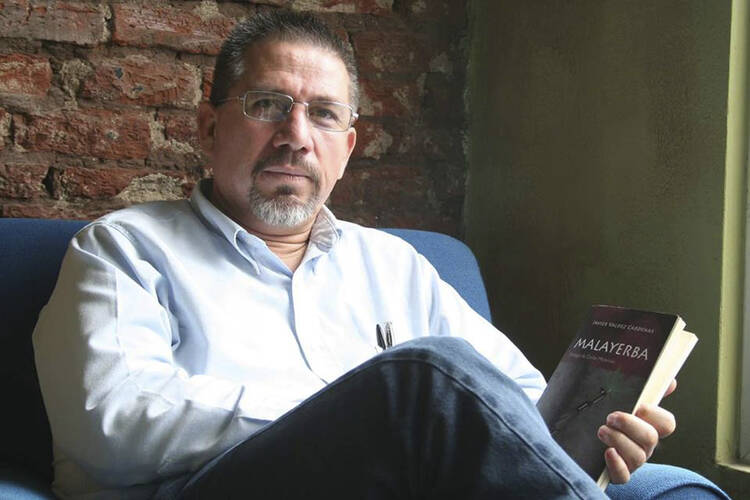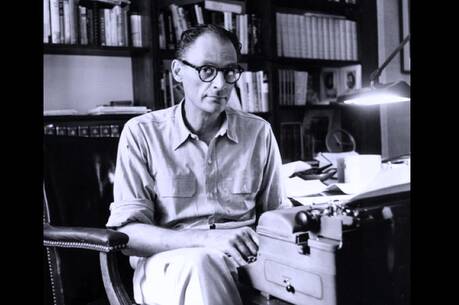The last time I spoke with Javier Valdez Cárdenas was on April 21. I called him on his cell phone, embarrassed because I had forgotten to wish him a happy birthday the week before.
“Everything’s alright, vato,” he said, using the local slang of the northern Mexican state of Sinaloa when referring to friends. I asked him if he felt safe, if there had been any threats because of his work as one of the country’s most celebrated investigative reporters. “No, everything’s quiet. Thanks for worrying, vato, but I’m alright, really.”
Three weeks later, on May 15, Javier left the editorial offices of Ríodoce, the magazine he co-founded and edited. Around noon, and just a few blocks away, gunmen stopped his car, forced him out and shot him 12 times. He died just a few minutes later; he was 50 years old.
Javier’s death has sent shockwaves through Mexico unlike any murder of a reporter has done before.
When the news first hit social media and WhatsApp groups used by journalists, I thought reports of his death were just false alarms. Four journalists had been murdered in Mexico since March, but surely Javier would not have been a target? He was too famous, too well known among foreign journalists.
Then I saw the photos. Javier’s body lying in the middle of the street. Next to him was a Panama hat. His hat. The same hat he wore seven years ago when I met him for the first time in Culiacán.
I regularly report on violence against journalists in Mexico, as I did in April for America, after reporter Miroslava Breach was shot to death in the northern border state of Chihuahua. But Javier’s death came as a personal blow to me. He was someone I knew well. He was a friend.
Javier’s death has sent shockwaves through Mexico unlike any murder of a reporter has done before. Unlike most victims in recent years, he was not only well known nationally but also highly esteemed among foreign correspondents.
He was the correspondent in Sinaloa for La Jornada, a national newspaper, but he was far more widely known because of his work at Ríodoce, a local weekly magazine in Culiacán. In a region rife with organized crime, corruption and collusion between local authorities and drug trafficking cartels, Riodoce did what few other outlets in northern Mexico could or dared to do: provide its readers with hard-hitting, independent journalism.
Ríodoce had been a courageous enterprise since its inception. Sinaloa is the cradle of the Sinaloa cartel, a large-scale producer of U.S.-bound heroin, marijuana and methamphetamine and the region where many of the country’s most notorious drug lords were born and raised. Most famous among them is Joaquín “El Chapo” (“Shorty”) Guzmán, founder of the cartel and once considered the world’s most powerful drug lord. El Chapo achieved almost legendary status after two daring escapes from a Mexican federal prison, until his third arrest in January 2016 and his extradition to the United States one year later.
I regularly report on violence against journalists in Mexico. But Javier’s death came as a personal blow to me. He was someone I knew well. He was a friend.
Exploring and writing about Sinaloa’s deeply rooted narco-culture was Javier’s life’s work. He interviewed drug lords, exposed political corruption and described the reality of daily life in a state mired in violence and tragedy in his regular “Malayerba” (“Bad weed”) column in Ríodoce and a series of books chronicling the lives of the invisible victims of Mexico’s brutal drug war: children (Los Morros del Narco) and women (Miss Narco).
His empathy and the warmth of his personality set him apart from other journalists covering the drug war. Whereas others were fascinated with the murky power structures of shadowy drug lords and their heavily armed soldiers, Javier focused on people, on victims. His greatest weapon was empathy.
“What happens here is a tragedy,” he once told me. “People live in constant fear, their daily lives are dominated by violence and by powers beyond their control.”
That empathy extended to foreign journalists who visited his state to cover the Sinaloa cartel and the drug war. He would often be the first person any reporter traveling to Culiacán for the first time spoke to. He helped correspondents navigate the murky waters of Sinaloa, warning us of the dangers of venturing into the cartel’s territory unprepared, always worried about our safety and providing contacts and information to make sure we did not leave the state empty-handed. All he asked in return was our friendship.
“The best way to thank me for helping you is by having a drink with me the next time you’re here,” he told me last year, when we went for a few shots of mescal in El Guayabo, one of his favorite bars in Culiacán, as I always tried to do when I visited the city.
But correspondents came and left, and for us, any danger of reporting on Sinaloa’s underworld ended when we boarded the plane back to Mexico City. For Javier, the danger was permanent. Riodocehas been a constant thorn in the side of both organized crime and Mexican authorities. The threat of violence because of his work was always there.
In 2009, a grenade was thrown at one the magazine’s offices, but no one was hurt. The editors and reporters of the magazine were aware of their limitations. Sometimes the magazine exercised self-censorship; no story was worth dying for.
But the situation recently became more tense for Ríodoce and Javier. Carlos Lauria heads the Americas Program of the press freedom group Committee to Protect Journalists (where I also work as C.P.J.’s Mexico correspondent). In 2011 C.P.J. had awarded Javier the International Press Freedom Award for courageous reporting. In a May 19 op-ed in The New York Times, Mr. Lauria wrote that in March Javier felt threatened after an entire edition of Riodoce was bought up by unknown individuals. The issue contained an interview with Dámaso López, alias “El Licenciado,” a drug lord fighting for control of the Sinaloa cartel with the sons of “El Chapo” Guzmán after the latter’s extradition to the United States.
Javier had left Sinaloa for a few weeks and even briefly considered leaving the country, Mr. Lauria wrote. But the situation appeared to have calmed down after Dámaso López was arrested on May 2. When I visited Culiacán last week to attend Javier’s funeral, many of his colleagues said they believed there was no longer any immediate danger to Javier and other reporters.
It made the shock of his brutal murder all the greater. After Javier’s death, Mexican journalists, national and international press freedom groups, nearly all major Mexican news organizations, foreign correspondents and Mexican journalists reacted with a fury no other murder of a Mexican journalist had provoked before. Open letters were signed, nationwide protests were organized (headed in Mexico City by Carmen Artistegui, the country’s most famous journalist) and foreign press associations expressed their solidarity.
The administration of President Enrique Peña Nieto has been held responsible by most Mexican reporters for allowing attacks against journalists to continue with almost complete impunity. But unlike after earlier murders of journalists, when the response of the authorities was tepid at best, Mexico’s government reacted strongly this time. On May 17 the president promised to beef up federal and state institutions meant to protect reporters and announced the creation of new protocols to bring the attackers of journalists to justice.
But the tragedy of Javier’s death is compounded by the fact that those measures come only after four lesser-known journalists were already murdered this year without sparking any real action from the federal government. Whether the new measures will be enough to provide any real protection to journalists just trying to do their job remains to be seen.










